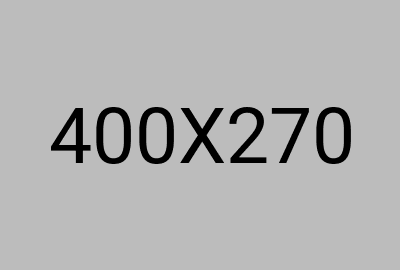Overview of REVIT Course
As one of the most powerful software tools for architectural and engineering design, REVIT has become essential for professionals in the construction and design industries. This course is designed for engineers, architects, and other professionals who are looking to harness the full capabilities of REVIT software to streamline their design and drafting processes.
Course Highlights
- Comprehensive Learning: Gain proficiency in all aspects of REVIT, including 3D modeling, drafting, and BIM management.
- Hands-on Training: Work on live projects to apply theoretical knowledge in real-world scenarios.
- Industry-Relevant Skills: Learn how to manage complex building designs, implement MEP design features, and ensure seamless collaboration with architectural and structural teams.
Whether you are pursuing a career in MEP design, architectural design, or structural engineering, this REVIT course with certificate offers a solid foundation for advancing your professional expertise.
REVIT MEP Course Syllabus
The Importance of REVIT Course Certification in Abu Dhabi
In a rapidly evolving construction market like Abu Dhabi, where advanced technologies drive the development of infrastructure, earning a REVIT certification can significantly enhance your career prospects. REVIT software training equips you with the skills required to excel in BIM-focused projects, which are increasingly in demand in both the public and private sectors.
Why REVIT Certification Matters
- Establishes Expertise: In the globally recognized REVIT BIM platform.
- Seamless Integration: Demonstrates your ability to integrate MEP systems, architectural designs, and structural elements seamlessly.
- Career Opportunities: Opens doors to higher-paying roles with top construction firms and consulting agencies in Abu Dhabi.
- Competitive Advantage: A REVIT certification sets you apart in the competitive job market and positions you as a proficient BIM professional who can manage complex design projects effectively.
Why Learn a REVIT Certification Course for Building Modeling?
Key Benefits of REVIT Certification for BIM Modeling:
- Efficiency in Design: Streamline your design process and minimize errors by creating precise 3D models.
- Collaboration & Integration: Leverage REVIT’s collaboration tools to work seamlessly across disciplines, including architectural, structural, and MEP teams.
- Advanced Project Management: Use REVIT to manage large-scale projects, track progress, and generate reports automatically.
- Boost Career Prospects: With expertise in REVIT MEP and BIM, you’ll be ready to take on leadership roles in major construction projects.
For professionals in HVAC design and MEP design, this certification can dramatically increase your value in the market by improving your ability to handle the complexities of modern building systems.
Demand for Skilled REVIT Software Professionals in the Construction Industry
The demand for skilled REVIT professionals is booming, particularly in high-growth markets like Abu Dhabi. As construction projects become more complex, the need for engineers and designers who can effectively use REVIT software to streamline workflows and ensure accurate, collaborative designs has never been higher.
1) Why is there a growing demand for REVIT professionals?
- Building Information Modeling (BIM): Is transforming the construction industry, and REVIT is one of its most powerful tools.
- MEP systems: In modern buildings require precise coordination between multiple disciplines. REVIT facilitates this by providing a platform for integrated system design.
- Abu Dhabi’s ongoing infrastructure projects: Including skyscrapers and industrial complexes, demand professionals proficient in REVIT MEP to ensure sustainable, cost-effective designs.
2) Industries Hiring REVIT Experts
- Construction: Working on large-scale building projects like residential, commercial, and mixed-use developments.
- Consultancies: Providing design and project management services to various clients.
- Government Projects: Supporting public sector initiatives that require advanced building modeling and system integration.
REVIT Training Outcome
Key Skills Gained
> Mastery of REVIT MEP tools for integrated design and analysis.
> Proficiency in creating complex, coordinated building models.
Software Proficiency
> REVIT (for architectural, structural, and MEP design)
> AutoCAD
> BIM 360
Career Advancements
> Opportunity for leadership roles in BIM and MEP design projects.
> Access to a broader range of job opportunities in construction firms and consultancy agencies.
Who Can Enroll in REVIT Certification Classes?
- Architects: Looking to integrate MEP designs into building models.
- Engineers (Electrical, Mechanical, Plumbing): Aiming to streamline the design process with REVIT.
- Construction Professionals: Seeking to enhance their BIM and MEP design skills.
- Recent Graduates: From engineering and architecture backgrounds who want to gain an edge in the competitive job market.
Career Prospects After Completing REVIT Training in Abu Dhabi
- BIM Manager: Oversee the integration of BIM tools across architectural, structural, and MEP teams.
- MEP Engineer: Design and manage HVAC, plumbing, and electrical systems using REVIT MEP tools.
- Project Coordinator: Manage large-scale construction projects with advanced design tools and collaborative features of REVIT.
- Revit BIM Specialist: Provide expert guidance in implementing and optimizing REVIT in construction projects.
Why Choose Our Institute for Autodesk REVIT Training in Abu Dhabi
- Industry-Aligned Curriculum: Our REVIT courses are designed with input from industry experts to meet the needs of modern construction projects.
- Experienced Trainers: Learn from certified trainers with real-world experience in BIM and MEP systems.
- Hands-on Training: Gain practical experience through live projects and case studies.
- Flexible Learning Options: Take advantage of both classroom and online training options to fit your schedule.
Available Training Options
- Classroom Training: Interactive sessions with direct access to instructors.
- Online Training: Convenient, self-paced courses with instructor support.
How to Get Autodesk REVIT Course Certification

Step 1: Enroll in the REVIT training classes.
Step 2: Complete the course modules and practical assessments.
Step 3: Obtain your REVIT certification upon successful completion.
Faq
You will be trained in Autodesk REVIT, which is the leading BIM software used for 3D modeling and design documentation. REVIT helps in creating intelligent models that link different project disciplines.
Software Features: Architectural, structural, and MEP components, Collaborative workflows, Visualization and rendering
In real-world projects, REVIT helps in designing, visualizing, and coordinating various building systems. You'll be able to create accurate 3D models, generate construction documents, and analyze building performance before construction starts.
Project Examples: Design and documentation of residential and commercial buildings, Coordination between architectural, structural, and MEP systems
REVIT allows for improved collaboration, error reduction, and time efficiency through the use of a single, coordinated 3D model. It's an essential tool for architects and engineers working in the AEC (Architecture, Engineering, and Construction) industry.
Key Benefits: Seamless coordination across disciplines, Real-time updates and modifications, Accurate construction documentation
Yes, the course covers architectural modeling, including floor plans, elevations, and sections. You’ll learn to design and manipulate walls, windows, doors, and roofs using REVIT tools.
Architectural Design Topics: Creating floor plans, sections, and elevations, 3D visualization of architectural components, Material management and finishes
BIM (Building Information Modeling) is a process that uses digital models for building design, construction, and operation. REVIT is a leading BIM software, allowing designers to create comprehensive 3D models that integrate architecture, structure, and MEP components.
BIM Benefits: Improved collaboration and accuracy, Lifecycle management of building projects, Conflict detection and resolution
Yes, the course includes MEP design, where you will learn to model HVAC, plumbing, and electrical systems within a building. You will also focus on system coordination and ensuring compatibility across disciplines.
MEP Topics Covered: Designing HVAC, lighting, and electrical systems, System analysis and performance checks, Coordination with architectural and structural elements
Yes, you will learn how to create and modify structural components such as beams, columns, and slabs using REVIT. The course will also cover structural analysis and how to ensure the model’s accuracy for construction.
Structural Design Areas: Creating and modifying structural elements, Analysis of structural integrity, Coordination with other disciplines
The course duration varies from 6 to 12 weeks, depending on the training format (full-time or part-time). The curriculum is designed to allow in-depth learning, with plenty of practical exercises to reinforce theoretical concepts.
Learning Options: Full-time immersive course, Flexible part-time study
REVIT is widely used in the AEC industry, including architecture, construction, engineering, and interior design. It is used for residential, commercial, and industrial projects, where efficient collaboration is essential.
Industries Using REVIT: Architecture and urban planning, Structural and MEP engineering, Construction project management
You will learn advanced modeling techniques to create efficient, parametric 3D models, including walls, columns, doors, and windows. These models help improve collaboration, reduce errors, and streamline the design process.
Modeling Skills Taught: Parametric design and family creation, Adaptive components and custom elements, Automated model updates
Yes, at the end of the course, you will undergo an assessment that covers all the skills learned. Upon successful completion, you will receive a certification in REVIT, which is recognized by the industry.
Certification Details: Industry-recognized certificate, Proof of competency in BIM and REVIT
Yes, the course covers creating accurate construction drawings from the 3D models, including floor plans, sections, and elevations. You’ll also learn how to manage views, scales, and annotations effectively.
Construction Drawing Topics: Setting up views, scales, and sheets, Detailing and annotation techniques, Exporting drawings for construction
Yes, the course teaches collaboration techniques within REVIT, such as worksharing, cloud-based storage, and real-time collaboration on projects. This ensures team members can collaborate efficiently from any location.
Collaboration Techniques: Worksharing and model linking, Real-time cloud collaboration, Managing team workflows
REVIT helps improve project coordination by allowing architects, engineers, and contractors to work from a single shared model, ensuring that designs are coordinated and conflicts are minimized.
Coordination Features: Clash detection and coordination, Integration of architectural, structural, and MEP designs, Real-time updates and changes
Yes, the course covers how to create realistic 3D renderings and visualizations from REVIT models, helping clients and stakeholders understand design intent.
Rendering Techniques: Lighting and material settings, Camera views and walkthroughs, Creating photorealistic images
REVIT allows integration with energy analysis tools to simulate energy consumption, optimize HVAC systems, and improve building performance. This helps in creating sustainable, energy-efficient buildings.
Energy Analysis Features: Solar and HVAC analysis, Modeling energy systems, Improving building performance
Yes, the course is suitable for both beginners and professionals, as it starts with basic REVIT concepts and gradually advances to complex modeling techniques.
Beginner-Friendly Aspects: Introductory modules on basic tools, Hands-on guidance throughout
Completing the REVIT course opens doors to various careers, such as BIM modeler, architect, structural engineer, MEP coordinator, and project manager in the construction industry.
Career Paths:
- BIM Specialist
- Project Coordinator
- Architectural Designer
Book Your Seat Now!
Our New Batch Starts On Every Week In a Month




